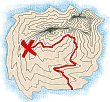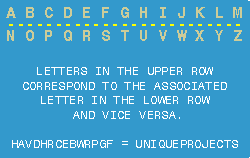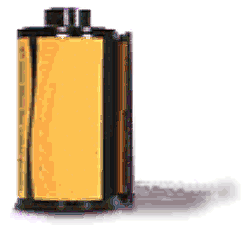 |
free plans: Treasure Hunt Ideas |
| Basic Description |
Gifts are often wrapped in an attempt to incorporate an element of surprise
into the gift-opening process. Unfortunately, after a few seconds, the contents of the package
become known and the anticipation subsides.
In the plan below, we show you how to
extend and enhance the anticipation.
Perhaps, more importantly, giving a gift via a treasure hunt
injects a substantial dose of meaning into the process
that is sure to be appreciated.
Our extensive list of ideas will allow you to customize a hunt for anyone. |
Methods of giving instructions
Paper: The simplest method of giving an instruction is to write it or print it
on some paper. Paper instructions are easy to create, and you can put them virtually anywhere.
If you do put the paper outside you will need to protect it from the elements. Also realize that paper
is light, so it will need to be securely held wherever you put it. If necessary, put the note in a
sealed plastic bag and perhaps an airtight container to ensure that the information will not be
compromised.
|
 |
Shrinkable Plastic: Shrinkable plastics are available at many craft stores and
via the internet. It goes by many different trade names including Shrinky Dinks, Shrink It and
Poly Shrink. You simply write and/or draw on the plastic, cut it with scissors or a knife, and then
put it in a preheated oven; it shrinks in a few minutes into a very durable plastic. One unique
use of this material is to write a set of
instructions and cut out a sort of jigsaw
puzzle. You could hide the pieces of the jigsaw puzzle in different locations that are described in
an instruction; after all the pieces were retrieved and assembled the next instruction
would be complete. Another use is to write an instruction very small; when you shrink the plastic,
the writing is tiny but amazingly clear. You could stash a magnifying glass with one of the early
steps
instructing the recipient to keep it handy for an upcoming step.. |
|
Walnut Shell: Refer to our walnut shell project for all
sorts of ideas with this one. You could
hide an instruction in a walnut shell and then place it with several other
walnuts; the recipient would have to crush open many of them before finding the instruction. Make sure that you put an little extra weight in the walnut along with the
instruction so that it maintains the proper weight and feel of
an ordinary walnut. |
 |
Cryptography: While you may want to write the instructions
clearly, you can add a level of complexity by encrypting the messages.
A sample use of this idea would be: 'step 7 or 9 is written below,
but to understand it you will need the decoder
which can be found written on a sack of flour at your grandmother's house' etc.
We have provided a simple decoder in the margin. Another code you can use is with symbol
fonts on a computer. To create this type of decoder, just type the letters 'A' to 'Z' with
an ordinary font and pair
these with their 'A' to 'Z' counterparts in a symbol font. To create the encrypted
message, just type in the
symbol font and the recipient should be able to convert back. Make sure that you test your
message before use, because it is very easy to make a mistake. |
 |
Film: A great way to extend the time of the hunt, if that
is desired, is to write some
instructions on a piece of paper and take a photograph of it. You can also take photographs
of a location which will serve as the instruction.
After taking pictures, you rewind the film and incorporate the roll into one of the steps; the
recipient would have to have the film developed before resuming the hunt. |
 |
GPS (global positioning system): If you know that the recipient has a GPS device
you could send them from location to location picking up GPS coordinates that sends them to the next
instruction. If you do this, be aware that although GPS units are increasingly accurate, you
need to make several readings to confirm your location. After noting your location, walk away and
then return and compare the coordinates. Repeat this several times until you get a feel
for the coordinates so you can provide accurate information. |
|
Public Sign. Another great technique is to create or complete a instruction by
finding a public sign or other public information. You could for example say find the sign on Oak avenue in front
of the library. Count the total number of letters on that sign and make a note of the number.
Go to the park and
stand by the swings: face north and walk the noted number of steps due north. The tree in your vicinity
has a black rock and below it you will find your next instruction. Using public
information can force your recipient to travel around town (or the country) collecting the requisite clues.
Other related ideas: count the number of words on this page on this book that can be found in the library,
count the number of rose bushes in the neighbor's yard: you can get as elaborate as you like.
|
 |
placement of instructions
Neighbors: Give an instruction to a neighbor or a series of neighbors.
This works particularly well
with jigsaw puzzle pieces as described in the shrinkable plastic section above.
One piece would be given to each of a select group of neighbors
that they need to visit to pick up pieces; after collect all of them, the puzzle would be completed and
the completed puzzle would display the next instruction. |
|
Underground: If you choose to put an instruction underground
it is critical that the notice be placed in a watertight and airtight container. Avoid putting
anything that would tip off the container to an animal (food, for example) because they will find it very
quickly. It is best to put some sort of marker over the spot that the recipient will need
to dig, such as an odd stone. You may want to have them discover a shovel in an earlier step
to use when they need to dig. |
|
Underwater: Here is a great way to introduce some
complexity to the hunt. An underwater placement must be
in a secure and watertight container. You could choose a brightly colored container and
place it in several meters of water so that it would be a challenge to dive and get it. A few
rocks inside the container should be enough to keep it submerged, and a few extra rocks, will
make it difficult for the swimmer to hoist it up. One beauty of this idea is that you,
the treasure hunt creator, doesn't even have to get wet - you can just drop the container from the surface,
but make sure that it isn't too deep: we recommend tying a weight to a rope and testing the
area to confirm the depth. |
 |
In Nature: Positioning an instruction out in nature can
be particularly exciting. You can choose a random place that you describe properly, or put it at the top
of a tall mountain or in a cave. As long as the area is not a highly trafficked area and
the container doesn't contain anything that would attract animals, it should be fine.
Use your creativity and utilize the geography that surrounds you.
You can cover it with some rocks, fallen branches or other debris. |
|
Online: If you are knowledgeable about the internet,
you could use it for one
or all of the steps. You could for example, post an instruction on a web page somewhere, and give
the web address in one instruction. So, the recipient may have to look under a rock in the woods, and
then reads that she needs to look at this particular address. You may want to
create the page a particularly difficult address as shown in the margin to the right. The recipient would have to
type the address correctly into the browser, but you can just click here.
|  |
Under and Within Furniture: We love to put instructions in places
where the user frequents. It is particularly unnerving to find an instruction below the desk
that they use everyday. You can often get away with such placements even in public places,
for example a table at a restaurant or a library. Make sure that the furniture is stationary,
though, because plenty of businesses rearrange, move and/or flip furniture for cleaning.
A note placed to the underside of a fixed table almost never gets caught. Make sure that the tape
you use is strong, and make sure that no one sees you placing it there: their curiosity may ruin
your treasure hunt. There are all sorts of places within furniture that are perfect
places to hide a note: underside of a drawer, taped on the back of a drawer back which may require
removing the drawer first; under a mattress; in the refrigerator, inside the battery case
of a electronic device, inside the sound chamber of a musical instrument etc. |
|
In Clothing: Another great place to hide
a note is in some clothing in their own closet. Choose something that they don't wear often and
hide it in a pocket. |
 |
In a Pen: The bodies of some writing pens can be opened
and you can slide a small note inside without it ever being noticed. To discover an instruction
in a pen that they have been writing with is particularly unsettling.
In a Book: Slipping a note in a book in a library is
a great way to hide instructions. You can put it within a book that has some
particular meaning between you and the recipient. You can also write something like: 'check
out the joke on page 271 of this book.' If the recipient is not expected to arrive at that
step for a long period of time, placing a note in a library book is at risk of unintentionally
getting discovered. You can also hide a note within a CD or DVD case.
|
|
Geographic Separation: This would be a more elaborate
hunt that would require more planning, but you could create a hunt that requires travel all
over the place. When you visited a city, you could plant some instructions and when you
were in another location you could plant some more. Such a hunt could last for years or
decades.
Written On Packaging: You could write an instruction
set on the back of some packaging, perhaps a box of cornmeal. If there is a chance that
it will take awhile for the recipient to get to that step, make sure that the packaging
isn't something that is used very often or could be discovered before it was intended. |
the gift itself
You can use this for any gift you want, but if you require a large amount of searching
you may want it to be something real satisfying: that way the whole process will become very
memorable. |
|
Nested Boxes: To extend the anticipation just a little bit longer,
you can put the gift in a small box,
and put that small box in a larger box and so on. This will extend the time just a few
more unnerving moments. |
|











